Email subject line and preheader text are like Batman and Robin of the email marketing world.
Initially, the email preheader text (Robin) had started as a sidekick to the subject line (Batman); their relationship evolved into a partnership where they both compliment each other.
So now, the subject line and preheader are an inseparable duo who work together to help kickstart your email campaign's success.
Want to know exactly how they impact your campaign? Keep reading.
In this guide, we'll tell you what preheader text is, how it can impact your campaign, and how you can optimize it to get the best results.
Table of contents
- What is an email preheader?
- How is preheader text different from preview text?
- Why is an email preheader text important?
- How long should the email preheader text be?
- Best practices to follow when writing your email preheader
- How to add a preheader text to your emails?
- How to add preheader text with Mailmodo?
What is an email preheader?
Email preheader is the line of text shown after the subject line of an email in the inbox, and the exact text shows up before the header of the email, as shown in the following example:
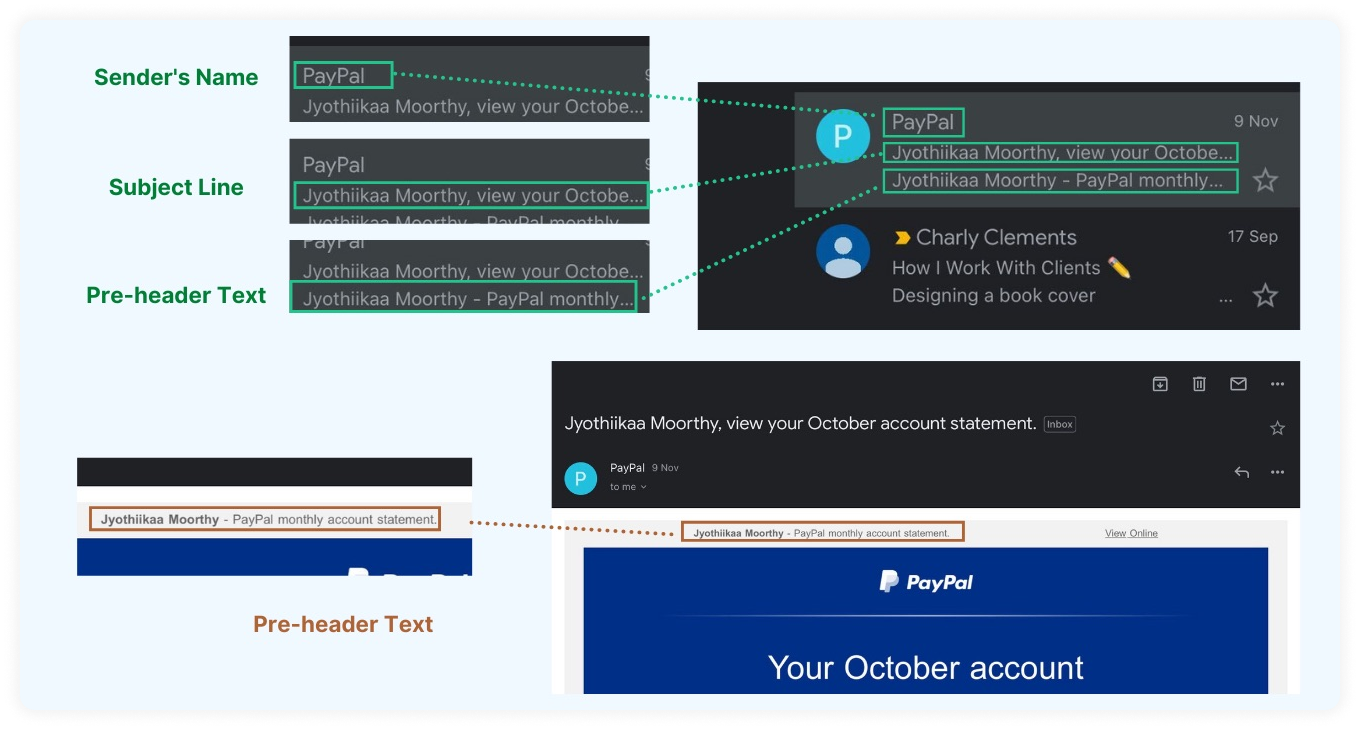
However, most people confuse preview text with preheader text. The preview text is not the same as the preheader text, as it does not appear above the header section.
How is preheader text different from preview text?
Preview text only appears in the inbox, whereas preheader text appears in your inbox and your email above the header area. Also, Carin Slater, an email marketing specialist, has written an insightful article on this topic.
Preheaders can take up some valuable space at the top of the email that mostly doesn't add any value to your design, so people opt for hidden preheaders.
So which one of these shows up in inboxes?
To answer this question, let’s first understand why preheaders and preview texts have been mixed up.
Hiding the preheader in the email was not acceptable earlier because it might lead to the email ending up in the spam folder. But email has come a long way from that, and now hidden preheaders no longer hurt your deliverability.
This hidden preheader is what most people call preview text and is why most people confuse preheaders with preview text. Many of the articles you find when you search on the Internet for email preheaders are written about preview text.
Since most people mean preview text when talking about preheader, we will use the term preheader here, even if we speak about preview text.
Why is an email preheader text important?
There are several reasons why using an email preheader will always be helpful, and here they are:
✅ It helps people to be able to preview their emails
With email preheaders, readers have a preview of the email, which helps give them an idea of the content of the email. Readers use it to see if the email is relevant or essential for them.
✅ A good preheader can help increase the email open rates
Readers look at the subject line to decide if the email is relevant to them and then look at the preheader text to get more idea of the content inside. So, a good preheader can convince readers that the email will be helpful and entice them to open the email.
Read about - 10 Ways to Increase Your Open Rates.
✅ It can help avoid words like "View in web browser" shown in the preheader section
If you don't customize your email's preheader, then ISPs will automatically display the first line of coded content in your email. These can be text snippets like "View in a web browser" or "You are part of this email list; you can unsubscribe here."
These words can make your email look robotic and make it more likely that people will delete such an email. If you don't write your preheader, you let the ISP determine what is shown in the most significant line of text apart from the subject line.
How long should the email preheader text be?
Your email preheader text can range from around 40 to 130 characters long. This range makes sure that your preview text appears in both desktop and mobile email clients.
When the email is opened on a desktop, the amount of preview text is displayed can depend on the length of the subject line. But when viewed on mobile, the length of the subject line doesn't affect the size of the preheader text.
That being said, mobile preheader text generally has a shorter range of 30 to 55 characters long.
If your preheader text is long, make sure that you keep the essential points toward the beginning of the text so that readers can understand it even if it gets cut off.
If your preheader text is too short, email clients show text from the beginning of your email. So, write longer preheaders to ensure you don't accidentally display a line of text from the rest of your email campaign.
In the below image, the preheader is "Friendly Reminder," but it is too short. So Gmail also includes the first line of text from the email along with the preheader.

Best practices to follow when writing your email preheader
A well-written email preheader works with the subject line to grab people's attention and entice them to open your emails. Thus, it plays a crucial role in increasing your open rates.
However, writing a good preheader can be challenging, so here are some best practices you can follow to optimize your preheader text to get the best results.
1. Make your preheader text and subject line work together cohesively
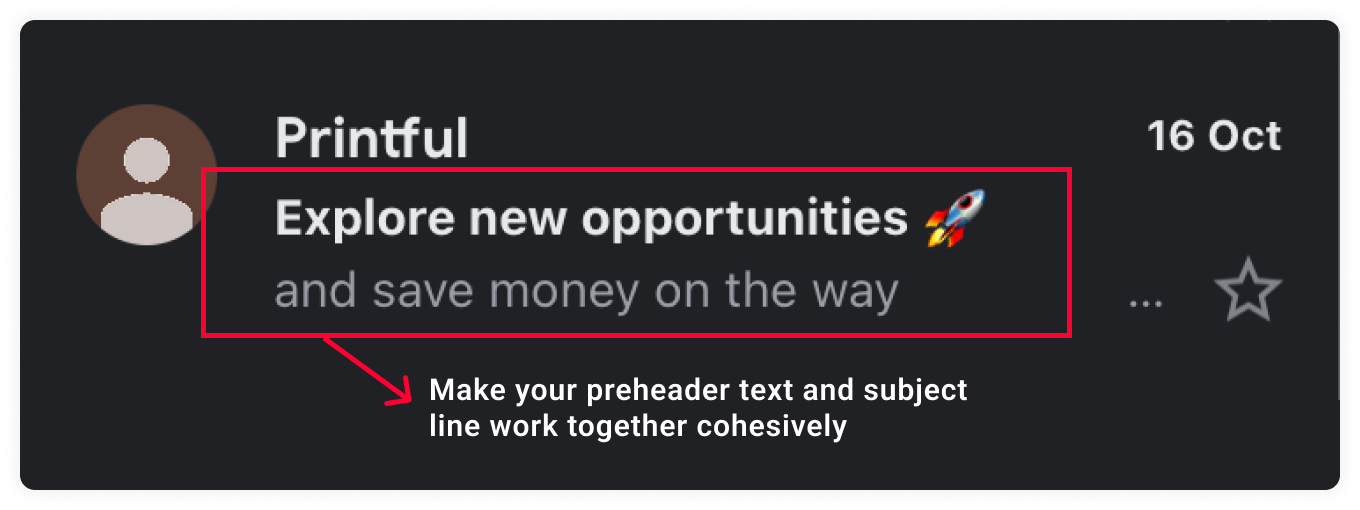
You can use the preheader section in creative and unique ways that look like the follow-up of the subject line.
And by making your subject line work with the preheader text, you create something new which can flare your reader's interest. Thus, it makes them want to open your email.
2. Make people curious about the content of the email
Here are the ways you can spark curiosity among your readers:
- Start a story or sentence but don't finish it.
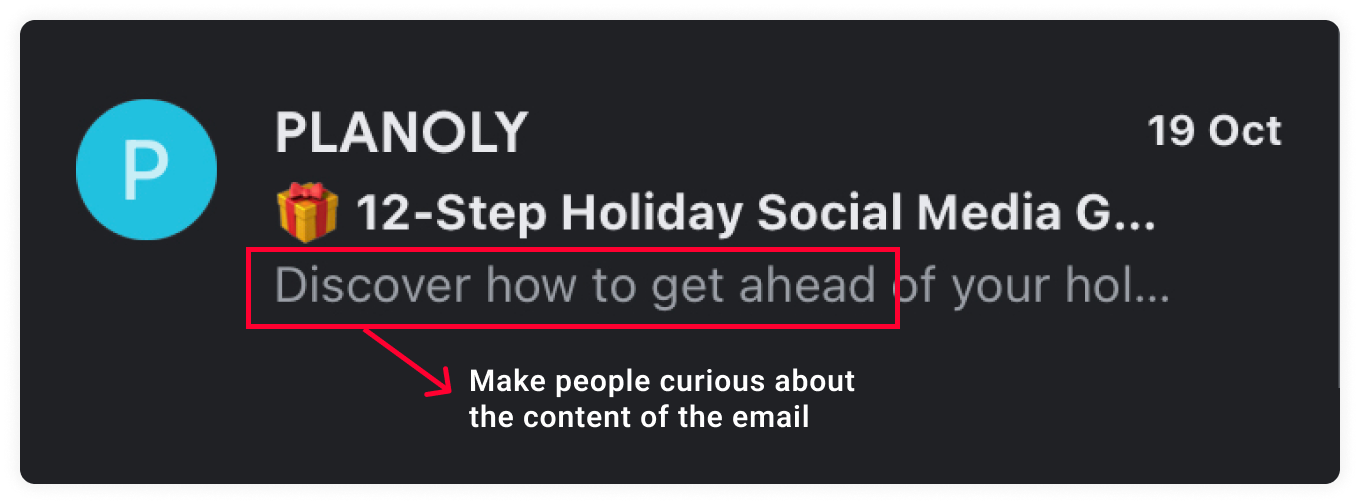
Ask an out-of-the-box question related to your email. For example, questions like "Do you want to retire by 40?"
Imply that the email contains something that readers know but have forgotten, like "Do you remember what it was like to have fun as a kid?"
You can imply that the email contains new helpful information. For example, "How to market your shop during the holidays?"
3. Use FOMO to your advantage
The fear of missing out (FOMO) is a powerful feeling that drives people to make decisions quickly and not miss out on opportunities.
You can create such a feeling in your readers by making the emails seem exclusive and with a limited time limit.
Here, Amazon uses this strategy to promote its holiday and festive season offers to its Indian customers.
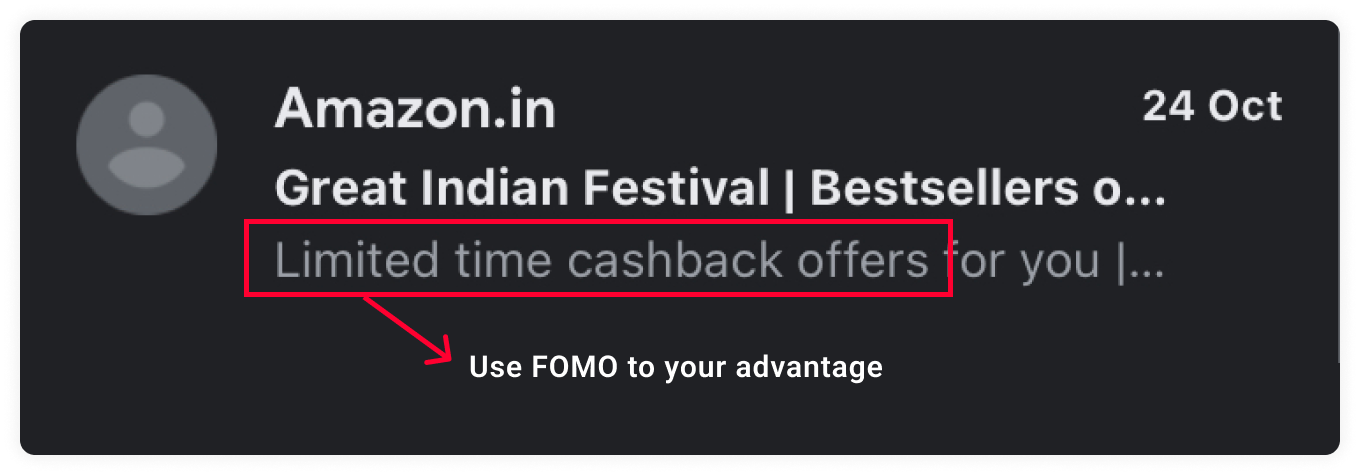
4. Include a call-to-action
Call-to-actions don't just belong in the email subject line and body, and they can also be used in the preheader text to get more people to open your email.
You can add a simple and straightforward call to action like "You should open this email to find out what…." or an indirect call to action like "Shop using (this) to get 10%.."
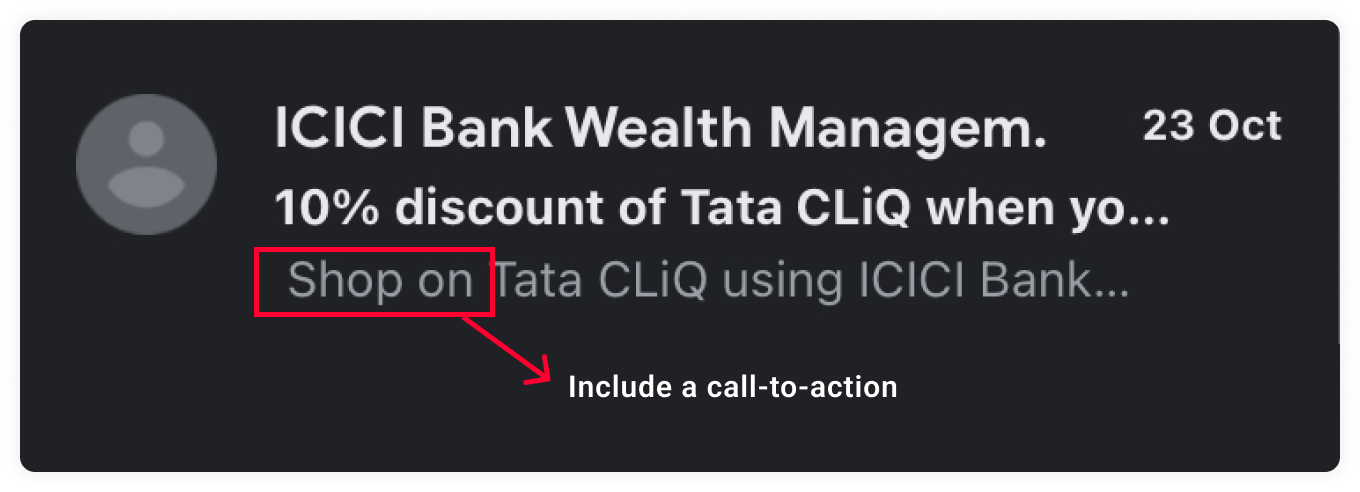
You can follow these rules to create an optimal preheader call-to-action:
Keep the call to action short and precise.
Make it seem easy to do.
Tell them the benefits of doing the call to action.
Also, make sure to include the call to action within the first few words of the preheader text so that it doesn't get cut off.
5. Don't repeat what you have written in the subject line
The email preheader is your second chance to make a first impression, so write something valuable and new rather than repeating the subject line.

You can provide more information about the email in the preheader and help build onto the subject line.
6. Personalize the text
Personalizing the text in both subject lines and preheader is a proven tactic that can be used to increase open rates.
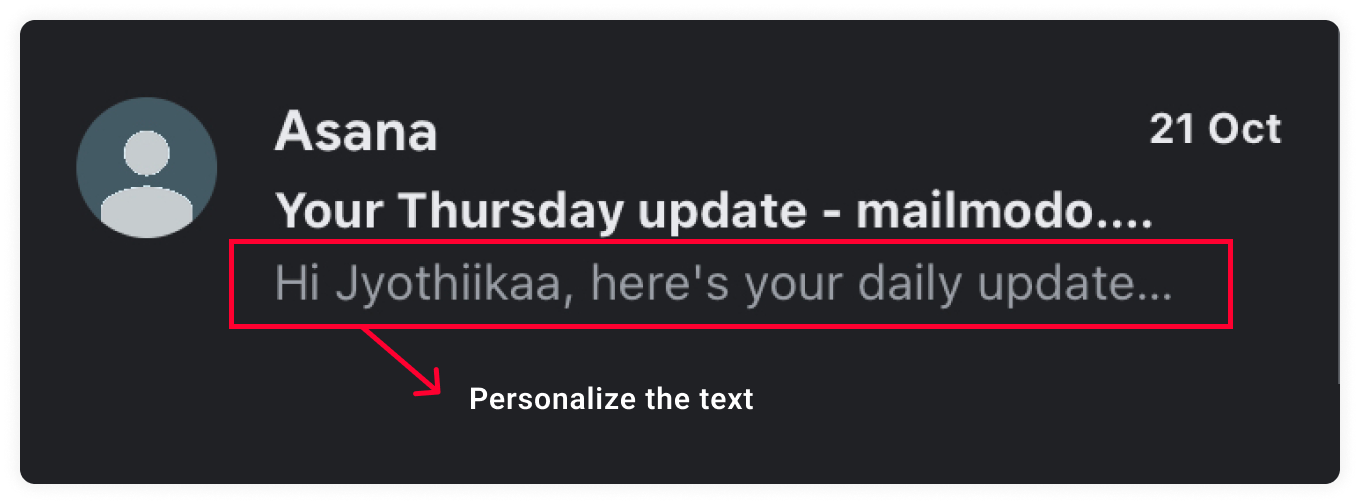
People love to feel like something is specially made for them. So adding their name to the preheader can make it feel like the email is personal and makes them want to open it.
Read about - An Ultimate Guide to Creating Personalized Emails.
7. Use emojis in the preheader to stand out in the inbox
You can use emojis in both the subject line and preheader if you want to stand out in your recipient's inbox.

They can express more information without using too many words, as shown in the example above.
8. A/b test for different preheaders
Like other elements in email marketing, you have to test your preheader text as well.
You can a/b test the preheader after testing the subject line to get accurate results of how much the preheader text alone influences people to open the email.
Create different versions of the same campaign with different preheaders to see which one works well with the subject line and makes people click on it. Testing will also help you decide how long the preheader should be and if you should keep it shorter or not.
How to add a preheader text to your emails?
Now after knowing about email preheaders, if you have decided that you want to use them in your campaign, there are two ways you can add them to your email.
You can add preheader text to your emails with code or without code.
With code
Using code, you can show the preheader text as the email's first text, which clients will pull to show in the inbox's preheader section.
Most people will want to hide this preheader portion in the actual email, so you need to add the following code to do so:
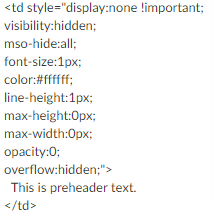
The code mentioned above makes sure that it will be almost impossible for people to see your text because it'll make the text unreadable with font size 1, white color, and 0 opacity.
You have to alter the placeholder text from "This is preheader text" to what you want it to be and add it to your code.
Without code
When creating your email campaign, you can add a preheader without using any code if you use email service providers. ESPs will provide a section to write your preheader below the place to fill in the subject line.
Some of the ESPs that provide the ability to customize your email preheader are Mailmodo, ActiveCampaign, and Mailchimp.
Read about - How to Choose an Email Service Provider.
How to add preheader text with Mailmodo?
Most email marketing softwares has a place for you to add your preheader text when you create your campaign. However, not all email marketing software allows you to customize your preheader text without code.
But in Mailmodo, you can add your preheader text when you create your campaign without using code.
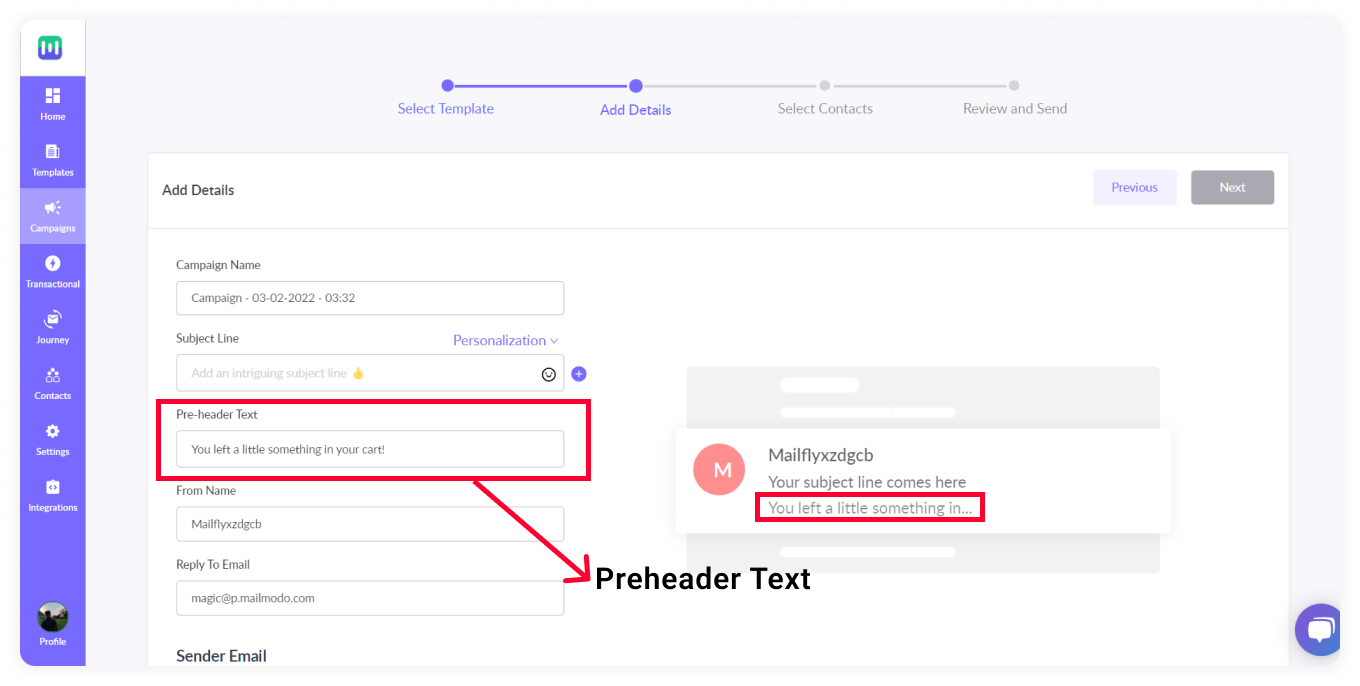
You need to select the template you want to use, customize it, then move on to the next step, which is to add details. In the add details region, you can find an area provided to write your preheader text.
It's just that easy to create preheaders using Mailmodo, so go ahead and try it out.
Sign up now!

